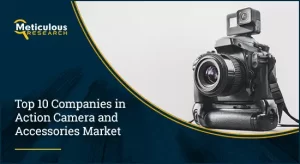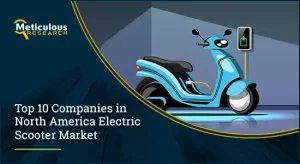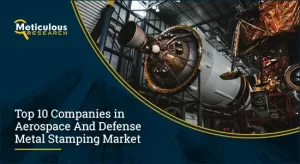Lithium-ion (Li-ion) batteries have become indispensable in modern technology, powering everything from portable electronic devices to electric vehicles (EVs) and energy storage systems (ESS). However, their complex composition makes recycling these batteries a challenging but necessary process. Li-ion battery recycling involves recovering valuable materials such as lithium, cobalt, nickel, manganese, aluminum, and copper from used or end-of-life batteries, helping to mitigate environmental pollution, conserve natural resources, and prevent hazardous waste accumulation in landfills.
As the global market for Li-ion batteries expands, so does the importance of recycling. Governments worldwide are offering incentives and support to promote sustainable battery disposal practices, presenting significant growth opportunities for industry players.
Download Free PDF Sample Copy of the Report: https://www.meticulousresearch.com/download-sample-report/cp_id=5481
Government Incentives Boosting Battery Recycling Initiatives
The improper disposal of batteries can have severe environmental consequences, such as air and water pollution. In response, countries around the world are investing heavily in battery recycling initiatives, aiming to minimize the number of batteries ending up in municipal waste streams. Recycling not only reduces the demand for raw materials from mining but also mitigates environmental harm associated with battery production and disposal.
Several governments are introducing incentives to stimulate battery recycling activities. In February 2022, the U.S. Department of Energy allocated over $3.1 billion to support battery recycling, manufacturing, and second-life applications. This funding is aimed at developing new, retrofitted, and expanded battery production facilities. Similarly, in December 2022, the Nevada Office of Economic Development awarded over $105 million in tax incentives to expand a large-scale lithium battery recycling plant in northern Nevada.
Additionally, government investments in electric vehicle (EV) battery recycling are further driving market growth. In November 2022, the U.S. government announced $74 million in funding for 10 projects designed to advance EV battery recycling processes and technologies. These efforts reflect the growing recognition of the critical role recycling plays in the sustainable development of the battery industry.
Request a Tailored Solution : https://www.meticulousresearch.com/request-customization/cp_id=5481
Rising Recovery of Valuable Materials from Li-ion Batteries
Li-ion batteries contain essential minerals such as lithium, cobalt, nickel, and manganese, all of which are critical to the global supply chain. With the ongoing trend toward battery recycling, companies are increasingly focused on extracting these valuable materials while safely disposing of hazardous waste. Industry leaders are working toward 100% recycling of end-of-life batteries, developing innovative processes to purify and recover materials within used battery modules.
For instance, in February 2022, Belgium-based materials technology company Umicore signed an agreement with France’s Automotive Cells Company (ACC) to introduce a cutting-edge recycling technology. This new process enhances the extraction efficiency of valuable materials while minimizing environmental impact and waste. Such innovations are expected to drive the market forward, offering substantial growth potential.
Regulatory Frameworks Encouraging Recycling Efforts
Governments worldwide are also implementing new regulations to support battery recycling, repurposing, and production processes. These rules aim to increase the recovery of valuable materials from used batteries, thereby promoting a circular economy. In December 2022, the European Commission introduced new laws to ensure that batteries are more sustainable, safe, and recyclable. These regulations mandate the collection of all end-of-life batteries and the recovery of essential materials like copper, cobalt, nickel, lithium, and lead.
Such emerging regulations are expected to foster growth within the Li-ion battery recycling market by encouraging industry participants to innovate and adopt more sustainable practices.
For a detailed analysis and market figures, download the full report at: https://www.meticulousresearch.com/product/li-ion-battery-recycling-market-5481
Li-ion Battery Recycling Market Research Summary
| Particulars | Details |
| Number of Pages | 330 |
| Format | |
| Forecast Period | 2024–2031 |
| Base Year | 2023 |
| CAGR (Value) | 22.3% |
| Market Size (Value) | USD 8.6 Billion by 2031 |
| Segments Covered | By Business Model
By Battery Type
By Recycling Process
|
| Countries Covered | Europe (Germany, U.K., France, Italy, Spain, Switzerland, Belgium, Norway, Poland, Finland, Rest of Europe), Asia-Pacific (Japan, China, India, South Korea, Singapore, Australia & New Zealand, Malaysia, Rest of Asia-Pacific), North America (U.S., Canada), Latin America (Brazil, Argentina, Mexico, and Rest of Latin America), and the Middle East & Africa (UAE, Saudi Arabia, South Africa, and Rest of the Middle East & Africa) |
| Key Companies | Duesenfeld GmbH (Germany), RecycLiCo Battery Materials Inc. (Canada), Li-Cycle Holdings Corp. (Canada), Cirba Solutions (U.S.), Accurec-Recycling GmbH (Germany), Redux Recycling GmbH (U.S.), Redwood Materials, Inc. (U.S.), Glencore plc (Switzerland), Fortum Corporation (Finland), Trishulavel Eshan Pvt Ltd (Li-Circle) (India), SNAM S.A.S (A subsidiary of Floridienne S.A) (France), Primobius GmbH (Germany), MTB GROUP (France), Tata Chemicals Limited (India), OnTo Technology (U.S.), American Battery Technology Company (U.S.), Attero Recycling Pvt. Lyd. (India), Umicore SA (Belgium), Lithion Recycling Inc. (Canada), Ascend Elements, Inc. (U.S.), ACE Green Recycling, Inc. (Singapore), and BatX Energies Pvt. Ltd. (India). |
Conclusion
The Li-ion battery recycling market is poised for significant growth, driven by rising government incentives, emerging recycling technologies, and the recovery of valuable materials. As global demand for electric vehicles, energy storage systems, and portable electronic devices continues to soar, the importance of sustainable battery disposal practices will only increase.
With numerous growth opportunities on the horizon, companies operating in the Li-ion battery recycling space are set to play a vital role in shaping a more sustainable future for the battery industry.
Purchase the report at: https://www.meticulousresearch.com/Checkout/23156946
Contact Us:
Meticulous Research®
Email- sales@meticulousresearch.com
Contact Sales- +1-646-781-8004
Connect with us on LinkedIn- https://www.linkedin.com/company/meticulous-research







